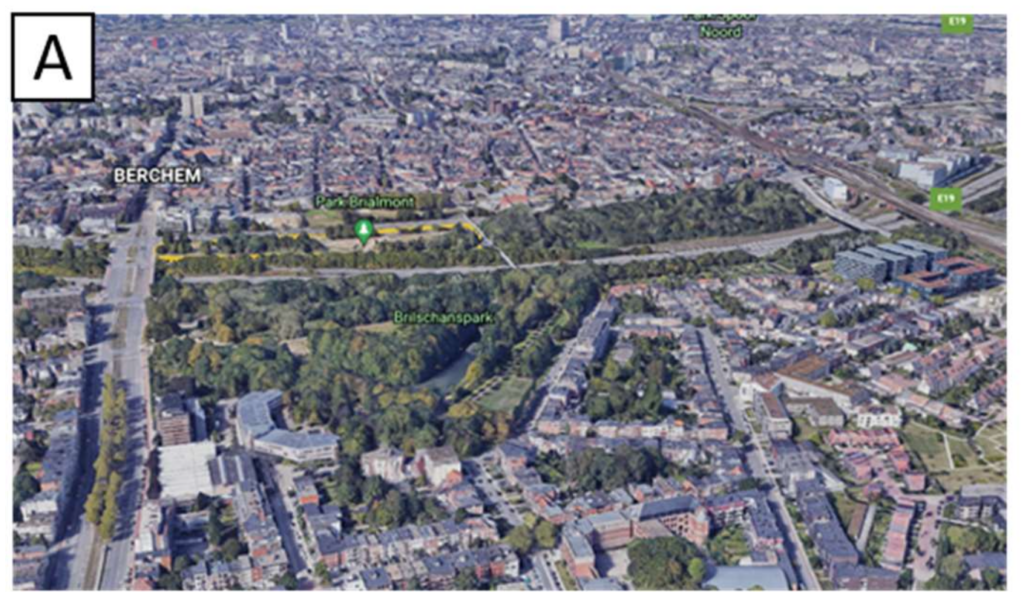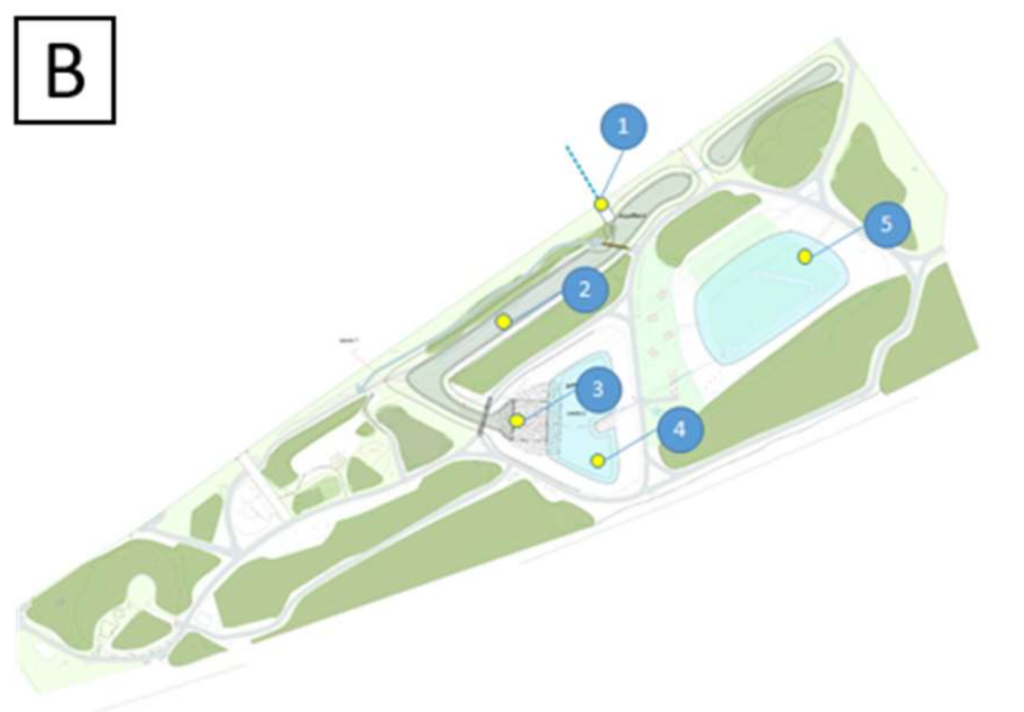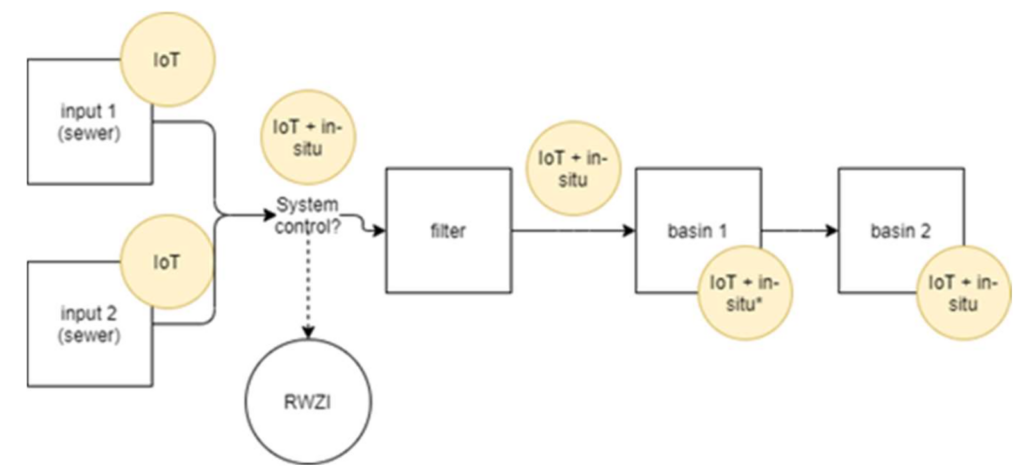CASE 4B: Treatment of high traffic roads and residential areas in the Antwerp region
Location: Berchem, Flanders (BE)
A full-scale demonstration site at park Brialmont and Wolvenberg is being developed because of the ambition of the city of Antwerp to become a climate robust city taking up the challenge of flooding by relieving the sewer system and so being prepared for the future. Wolvenberg, since its recognition in 2001, is the only nature reserve in the city of Antwerp. The park is located close to the train station of Berchem, a district in the southern part of the city and based on top of the remains of the surrounding walls of Antwerp. The site has been set up as a nature walking park and a playground open to the general public.
Current Status Case Study + Needs for Improvement:
At the demo site, runoff water from old Berchem (a nearby residential area occasionally suffering from floods) and the Single (ring road around Antwerp) will be collected, buffered and infiltrated in swales. The swales are used as play areas in the park, so pollution has to be avoided on the surface and prevented from building up in the soil. Therefore, a nature-based filter system, i.e. a filter bed with gravel/drainage sand, will be installed to treat the water before it reaches the swales. Thus, the site allows for the evaluation/monitoring of pollution pathways from two different urban areas and the impact of a nature-based treatment technology on runoff quality.
Activities - Technical configurations and envisaged improvements
An inline smart monitoring system, including simple, robust online measurements and advanced automatic samplers will be implemented. This will enable monitoring pathways of pollutants of urban runoff, monitoring the full-scale nature-based filter system and modelling of the system performance. The monitoring setup for this site is shown in
the figure. Ten IoT sensor platforms will be installed on this site to continuously monitor incoming flow at the ten inlets. This is the starting point for using IoT to trigger the in-situ sampling. The IoT sensor platform can monitor easy-to-monitor parameters and steer in-situ sampling at critical times. Each of these inline IoT sensor platforms will continuously measure the following parameters: (1) Electrical conductivity, (2) Turbidity with both sensors being connected to the datalogger, (3) Water level. 5 sampling devices will be coupled to an IoT sensor platform and will be used for the in-situ sampling.
Ambition until the Project End and Beyond
Within the pilot site, a prototype of a smart inline monitoring system will be developed and implemented. Monitoring effectiveness of a full-scale nature-based filter system will be achieved. Recommendations will be produced for the application of nature-based filter system as pre-treatment for water infiltration.


(A) Aerial view in Google Earth of the Wolvenberg site (yellow frame at the park Brialmont); (B) A detailed overview of the Wolvenberg site. 1) the inlet of the collected urban runoff water from both the ring road the Single and the residential area from old Berchem, 2) buffer system, 3) the filter, 4) the small swale and 5) the large swale.

